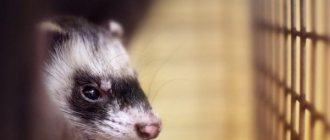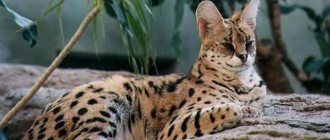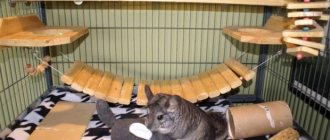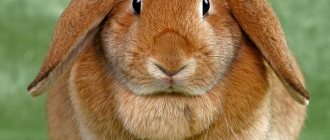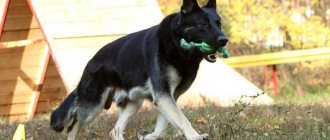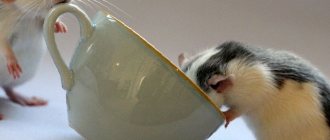Meet the animal
Jerboas are mammalian rodents whose natural habitat is the steppe zone and desert Palearctic regions. This zone includes Europe, Asia north of the Himalayas, North Africa down to the south of the Sahara Desert. But you can also meet representatives of this species in the forest and even in the mountains, at an altitude of 2 thousand kilometers above sea level.
Rodents are quite small in size. The length of the body, depending on the species, is in the range of 4-25 cm, while the body weight is on average 200-300 g. The length of the rodent's tail, as a rule, is greater than the length of the body and ranges on average from 7 to 30 cm. The top of the tail is crowned with an elegant and a fluffy brush of black and white color.
The appearance of this modest animal is quite characteristic and recognizable due to its short body and long hind legs. It is precisely because of the hind limbs, which are atypical for rodents, that the animal has become popular - they are also its calling card. The elongated hind legs of the rodent are highly modified. The foot lengthened during evolution, and the three middle metatarsal bones fused into one.
Jerboas mainly move using their hind limbs, using characteristic jumps, the length of which in large species can reach 3 meters. The tail plays a key role in correct movement.
When jumping and making sharp turns, this part of the body acts as a balancer, helping the animal cope with the gravity of the earth. The head, which is large relative to the body, has a slightly blunt muzzle and large rounded ears, the length of which can reach up to 6 cm.
Did you know? The length of the tail of some types of jerboas can exceed the total length of its body by 4 times.
According to their way of life, these mammals are typical nocturnal representatives of the fauna , whose day is spent in small burrows. But in the Kazakh steppes there lives an exception to the rule. The local species is a representative of the diurnal fauna, which only hides to sleep at sunset.
During the cold season, jerboas hibernate until the spring warms up. The food for these rodents can traditionally be seeds and underground roots of herbaceous plants, and small insects.
Did you know? Jerboas do not need drinking water: rodents obtain the necessary moisture exclusively from food.
In their natural desert environment, jerboas play a significant role - this animal cannot be called a useless rodent. The animal has a noticeable impact on the soil and plant species diversity, and is also necessary food for many predators.
Food for jerboas
Medium jerboas are fed with the same food that the animals obtained in their natural habitat: hemp and sunflower seeds, corn, rice, millet.
Dwarfs love spruce seeds and canary seed. They eat very little food - one and a half to two grams of a mixture of grains. Animals love fruits - apples and grapes. Dwarf jerboas love “meat additives” - butterflies, crickets, grasshoppers. Ground hares are more omnivorous. Their diet contains all the seeds listed above, the fruits of rapeseed and rolled oats, dandelion roots, carrots, beets, and potatoes. At home, not everyone hibernates. Thus, ground hares love to gnaw on thin branches of maple, willow and aspen in the winter months. Only the largest species become truly tame.
Purchase rules
Buying a pet jerboa is an easy task, but you need to understand that even such an unpretentious animal must be chosen correctly. There are a lot of advertisements on the Internet for the sale of these animals, but most zoologists and rodent lovers do not recommend buying an animal from someone else, and this is not without reason.
The fact is that these mammals reproduce in artificial conditions quite difficult. Only serious private nurseries or zoos can breed healthy offspring. When rodents breed at home, the offspring come out weak, without immunity to many diseases. Such an animal can be sick with anything. It is also worth noting that offspring born in the makeshift conditions of an apartment can be completely wild and experience hostility towards humans.
The guinea pig is one of the most popular, beloved and safest pet rodents, which is very important if there are children in the house.
But even in the pet store you should keep your eyes open. Often sellers do not have time to observe the animals, and sick animals may be located next to healthy ones. The jerboa should be mobile and active, the fur should be clean and smooth, without lumps, and the eyes should be shiny. All this, as well as a good appetite, indicate the excellent health of the future pet.
You can often observe swelling of the lower legs of store-bought jerboas. This pathology is not a complex disease; it occurs due to the cramped living environment. When moved to a large cage, the disease goes away on its own, so there is no need to be afraid of such jerboas.
Rodent care
Since jerboas are clean mammals and prefer to go to the toilet in one place, there is almost no smell from them. But despite this, you need to clean the cage/enclosure once a week. Rodents do not need bathing; they are able to take care of their fur themselves.
In their natural habitat, rodents run on soft ground, so there is no need to add hay when changing the filler in the tray. The hard components can injure your pet's delicate paws. It is also necessary to add small sticks and twigs to the cage every week. This way, your pet will be calm and happy and constantly busy with construction.
Jerboas are cute, funny and charming mammals, but they are still nocturnal animals. If you live in a one-room apartment, then this may not be the best choice for a rodent. Therefore, before buying a small animal, weigh all the pros and cons so that you don’t have to pay for your choice with lack of sleep. If the space in the house allows it, and the night work of the rodent does not frighten you, the jerboa will become a faithful friend for you!
Selection and arrangement of the cage
All representatives of jerboas are very active animals; space is vital for them; without it, a rodent can even die. Therefore, you should choose the largest from those that are offered to you: its minimum volume should be at least 1 cubic meter. The material of the cage should consist exclusively of steel—the animal will gnaw through plastic or wooden structures instantly.
Important! When choosing a cage, pay special attention to its height. The animal moves by jumping - the height of the cage should provide the pet with free movement.
Inside the cage itself, conditions should be created that closely resemble the natural habitat. Instead of standard bedding for rodents, use turf or sand. Also, do not forget about the special sand for jerboas, from which he must build his own burrow. The place where the jerboa lives should be provided with small sticks, dry roots, dense grass or hay: with the help of them the rodent will create a shelter for itself from dangers.
SQUIRREL FAMILY
Squirrels are the most ancient species of rodents, there are more than 260 species. This family contains arboreal and terrestrial species. The arboreal ones have paws with movable toes, they have sharp claws to make it easy to climb trees; In terrestrial animals, the claws are long and blunt, for digging burrows in the ground.
The squirrel family includes species such as: marmot, ground squirrel, flying squirrel, squirrel, chipmunk. The size of these animals ranges from 9–60 cm, weight from 10 g to 7 kg. The smallest dwarf squirrels, the largest in the marmot family. Squirrels and marmots living in areas with cold winters have thick, beautiful skins, which is why they are used by humans in industry.
On average, the lifespan of squirrels in the wild is from 2 to 5 years, in captivity – 5–15 years.
One or more in one cell
The jerboas themselves are solitary animals ; even in natural conditions they are found in pairs or groups only during the breeding season, after which they again live a solitary life. Therefore, putting more than one individual in a cage is dangerous - the animals simply will not divide the territory, which can result in the death of one of them or a constant state of stress for both.
Another rodent that often lives in an apartment is the hamster. Find out what a cage should be like for this cute animal.
Nutrition
It has already been noted that this rodent is a nocturnal traveler. At this time he goes out in search of food. But what does a jerboa living in flat areas eat? Usually, to obtain the necessary microelements, the animal eats insects and larvae; it is also in search of plant bulbs and tubers and is not averse to eating their seeds. In deserts, the rodent searches for shrubs and other possible plants in order to use the stems they find for food. It is worth mentioning the dwarf fat-tailed jerboas. If they are placed in the same terrarium, they quarrel violently, and it happens that the stronger one eats the one who is struck. Therefore, before putting several individuals in a cage, you should find out what species your jerboa belongs to. We found out what the animal, common on the plain, eats. But how do those who choose to live in mountainous areas survive? These animals are also in search of any vegetation that may be on the peaks. The roots and green parts are used. Usually this food is enough for them to live a full life.
What to feed
Information about what jerboas eat is no less important than knowledge about its habits, so with a healthy diet, this rodent will reward you with longevity and good health. Jerboas are unpretentious in food and are omnivorous mammals .
But this does not mean that all food is suitable for them. The most acceptable delicacies will be the roots or roots of plants, various seeds; insects, which can easily be purchased at any pet store, will be a special delicacy for them.
But it is best for them to choose special grain mixtures from wheat, oats, barley, etc. Also, jerboas do not refuse sunflower seeds, pumpkin, melon, dandelion leaves, pieces of fresh fruit (apple, pear), with the exception of such exotics as mango, raspberry, avocado, blueberry, etc.
Important! Under no circumstances should jerboas be given food prepared for humans - this can lead to the death of the animal.
Peculiarities of behavior of mammals in open nature
This representative of the jerboa family is not very famous for its friendliness and sociability in its native circles, so it prefers to live in proud and independent solitude. Establishing contact with their relatives only during the mating season.
The period of activity of this animal occurs at night, when it is light outside and it never sticks its cute nose out there. The jerboa sits in its house all day, and when the sun sets, it waits for about an hour, only then does it begin to gather in search of food. This little animal, by its nature, is very careful and wary; under no circumstances does it just leave its hole; before leaving, it sniffs everything for a long time and listens to see if there are any unusual extraneous sounds or rustles.
Also, these furry animals are notable for their hard work and diligence, this is manifested when the jerboas begin to build a home for themselves. For his loved one, he often digs several holes at once, among them there are holes intended for winter hibernation and summer holes for permanent residence, and he also constructs temporary housing.
If you examine the personal possessions of jerboas, you can easily notice that “houses” with the status of “permanent” usually begin with a passage that is closely packed with an earthen lump. This passage runs horizontally, its length on average can be up to 5–6 m, there is a slight turn from it, which in turn leads to a certain nesting chamber located at a depth of about one meter.
In the nesting chamber there is a “bed” of the animal, which is shaped like a ball; it is formed from a lot of dry grass, moss, fur, down and feathers.
Winter burrows of jerboas differ from summer ones in their depth, which is often approximately 2–3 m. These pretty animals establish nests for themselves at different levels of such a winter “apartment”.
Lazy jerboas are also found in nature; they are famous for the fact that they often use burrows built by other animals, for example, gophers, as housing.
Throughout the warm season, the jerboa does what it does to prepare for winter, namely hibernation. He is not used to making large supplies of food; all his preparation consists of carefully fattening himself; by the end of October, the weight of his miniature body usually approximately doubles.
Also, these little animals are famous for their unpretentiousness in food, they are usually omnivores; their daily menu contains equal parts of plant foods, such as various seeds, roots and plant bulbs, and small insects, it all depends on what foods predominate on the his native territories.
If the jerboa lives near agricultural lands, then its life is greatly simplified, because it has access to walks through sown fields and vegetable gardens, where it can enjoy plenty of cereal grains, sunflower seeds, and peas, but does not cause any significant losses harvest.
The mating season for these mammals usually drags on a little, but most often their mating activity occurs from April to June. A female can become pregnant twice in a year, but this is not a pattern. The gestation period for babies lasts approximately 23–28 days. At the end of pregnancy, from 1 to 9 cubs are born, most often these are 3–5 small jerboas.
We suggest you read: Arthrosis in cats. Arthritis in cats and cats - symptoms, treatment, medications, causes
The maximum life expectancy in the wild is 3 years.
Is it possible to let her go for a walk around the apartment?
It is strictly not recommended to release jerboas from their cages. These animals are not friendly to humans; at the first opportunity, your pet will run away from you. After this, the rodent will find a quiet place and begin to create a hole. In this case, even the walls of buildings will not stop him. In one night, an average-sized animal can make a hole about 30 cm in a concrete wall, and about 50 cm in a brick wall!
Reproduction
The animals reach maturity at the age of 2 years. By the end of March, in April the mating season begins, which will last until hibernation. During this time, the female can bring from one to three litters.
We invite you to familiarize yourself with the most common types of mice
Pregnancy lasts 25 days, with a litter of 1 to 8 babies. For the first two months, they live with their parents, who teach them life skills. Then they become independent.
After emerging from hibernation in mid-March or early April, large jerboas begin the breeding season. The female gives birth to one or two litters per year, each containing from one to eight cubs.
The gestation period is less than a month, about twenty-five days. They live with their mother for no more than two months, after which they leave. After two years, they reach sexual maturity.
Life expectancy in the wild is, on average, very short - rarely more than three years. This is due to the fact that they have many natural enemies; in captivity, their lifespan increases significantly.
The diet of jerboas includes roots, which they obtain when digging holes, fruits, vegetables, root vegetables, cereal grains, but, in addition, also worms, larvae, and insects that can be caught. Jerboas switch from plant food to animal food quite easily.
BEAVERS FAMILY
The beaver is a fairly large semi-aquatic rodent with a characteristic, unique to it, flat tail, with the help of which it swims and signals danger, and a developed swimming membrane on its hind legs. Nowadays, there are only two species of beavers on the globe: Canadian and common.
They live from the Atlantic coast to Mongolia and the Baikal region (common beaver) and in North America (Canadian). In addition to their place of residence, these two species differ in the number of chromosomes - 48 in the common one and 40 in the Canadian one. Beavers live in colonies; they are the only family of rodents capable of building amazing dams on water from available twigs.
The lifespan of a beaver in the wild is 15 years; in a zoo they can live up to 30 years.
THE MOUSE FAMILY
The largest and most diverse family among rodents, its representatives include mice and rats, the variety of which reaches about 500 species. These small animals weigh from 5 to 300 g, with proportionally folded body parts, a long tail and a uniform coat color. They are divided into rats and mice only due to their size, the small ones are mice, the larger ones are rats.
Representatives of the mouse family live on all continents of the globe and have readily adapted to all natural conditions. Thus, in Southeast Asia, where there are many dense forests, some of the species have adapted to life in trees; in Africa, where most of the territory is occupied by deserts, mice have coexisted with gerbils; in Europe, mice live close to people (in basements, houses and apartments, in warehouses).
On average, the lifespan of mice and rats is 2–3 years.
